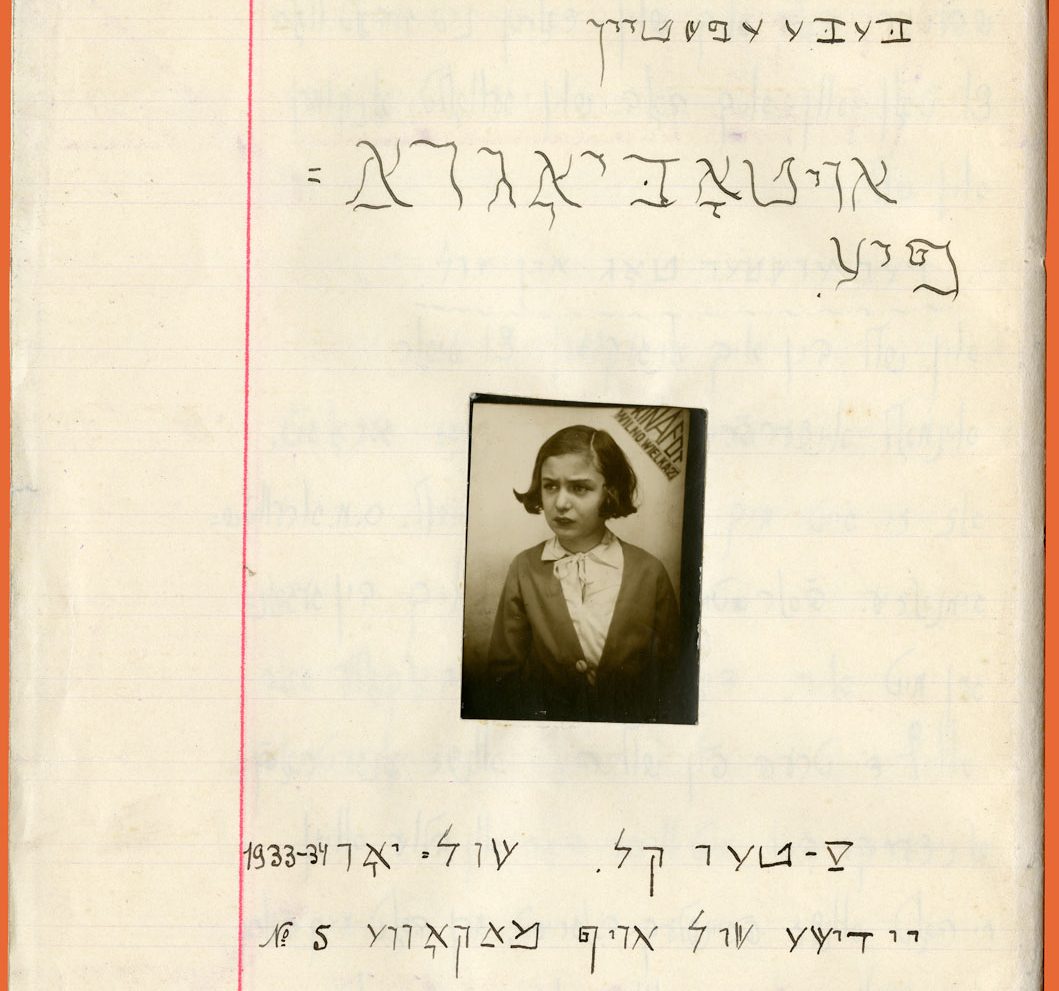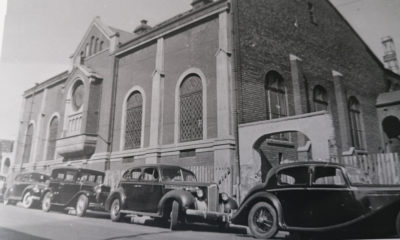
Featured Item

Jewish exhibition reveals mother’s past life
Published
3 years agoon
By
Jordan MosheWhen American lawyer Michael Leventhal saw a photograph of his late mother, Beba Epstein, as an 11-year-old on the front page of the New York Times in 2017, he was shocked.
It led to him and his family discovering parts of his mother’s life they knew nothing about. It also heralded the beginning of the New York-based YIVO Institute for Jewish Research’s unique online exhibition, which aims to present the personal experiences of Jewish individuals who lived through seismic historic events.
Back in 2017, Leventhal received a call from a family friend who told him to check out the New York Times. He didn’t know what to expect.
“One of my mother’s best friends had received a call from her grandson about an article she might be interested to see,” Leventhal told the SA Jewish Report this week. “He didn’t know it had anything to do with us. When she saw it, she thought she recognised our mother, and emailed it to us.
“My sister and I looked at the picture together and thought, ‘My G-d, that’s our mother in the New York Times.’”
YIVO had discovered more than 170 000 documents in Vilnius, Lithuania, having previously believed they were destroyed by Nazi forces. Among these was the journal of a young Epstein, written in Yiddish, offering a vibrant account of her family life in pre-war Vilna.
Those working at YIVO believed Epstein had perished in the Holocaust, and while Leventhal knew she had survived, the accounts captured in the journal illustrated a part of his mother’s life she’d never spoken about.
“Mom hadn’t told us very much about her childhood,” says Leventhal. “We had photos of her as an infant, in her twenties, and then post-war – nothing in between. When we saw that photo of her, we saw someone we knew almost nothing about. We were blown away.”
Leventhal reached out to YIVO’s chief executive, Jonathan Brent, to find out more about the astonishing discovery, receiving a copy of his mother’s journal and an English translation of her writing in the latter part of 2017.
Since then, the story of Beba Epstein became the focal point of the virtual exhibition. It’s the first of an envisioned series of similar personal historical explorations offered by YIVO.
Meticulously overseen by curator Karolina Ziulkoski, the virtual museum offers visitors the opportunity to engage with Epstein’s story and Vilna’s history, blending the personal childhood antics of a young girl with broader historical context in an engaging way.
“We wanted to develop a platform that had no physical counterpart,” says Ziulkoski, an experienced transmedia developer. “We didn’t want to replicate a museum online, aggregating major features and trying to emulate an in-person experience. This was made to be solely online and provide something altogether different.
“Usually, history is presented in a macro view,” she says. “The thinking becomes that things happened in a vacuum, having no connection with real-live people. In this project, we aimed to use Beba’s story to relate personal history to broader history, and teach people about what happened through her eyes.”
This platform enables learning around family life, war, immigration, global context, and other areas. Ziulkoski says the idea was to use Epstein’s story to relate to many other areas beyond it, and give educators the tools to teach about several other areas without being limited to the Holocaust.
YIVO’s chief of staff, Shelly Freeman, says that schools across the United Kingdom, the United States, South America, and elsewhere have been making use of the resources.
“This exhibition avoids academic heavy material and is made to be accessible,” says Freeman. “It’s focused on school-age children and has potential for classroom learning, but it can be used to go beyond that. It deals with relevant issues today, touches on universal themes across the board, and offers micro and macro history through the eyes of a young girl.”
The project is the latest step in YIVO’s digitisation initiative to make European Jewish history more accessible to Jewry across the globe.
“You can’t make up what we have in the collections at the YIVO institute,” Brent told the SA Jewish Report. “There are about 23 million documents, the largest collection to have survived World War II. It’s a treasure that tells the story of the Ashkenazi Jewish world, one which most Jews, sadly, don’t know.”
Letters, diaries, plays, musicals, municipal records, speeches, and more are featured among the documents housed at the museum, collectively telling the story of European Jewry before and during the Holocaust.
Because of the collection’s relative inaccessibility to those beyond the United States, the YIVO team committed to creating the online portal through which Jews the world over could interact with the artefacts and reconnect with their history.
“Even if you visit the museum, you often have no idea what you’re looking at behind a glass display,” says Brent. “We wanted this history to be accessible, helping people around the world to connect with their heritage and themselves. We’ve digitised about 1.5 million pages already, and we’re determined to do more.
“The collection is a Jewish treasure, and we want to help people connect to their past and the worlds they thought are no more.”
This is certainly the case for Leventhal, who says that the journal’s discovery has enabled him to deepen his connection to his late mother.
“When my mother passed away in 2012, I thought I’d never be able to learn any more about her,” he says. “But then this journal fell out of the sky, and it was something of a miracle. Although I knew my mother, I didn’t have a full understanding of her. I’ve been granted so much insight onto who she really was as a person.
“Mom was complicated and suffered a lot of Holocaust damage,” he says. “She had a hypochondriac’s bent to her, and used to get attention when she complained about not feeling well – it drove me crazy. I always attributed it to the war, but when I read in her journal that she had behaved like this to get attention as a girl, it all made sense. This is who she always was.”
Visit the online exhibition at https://museum.yivo.org/










